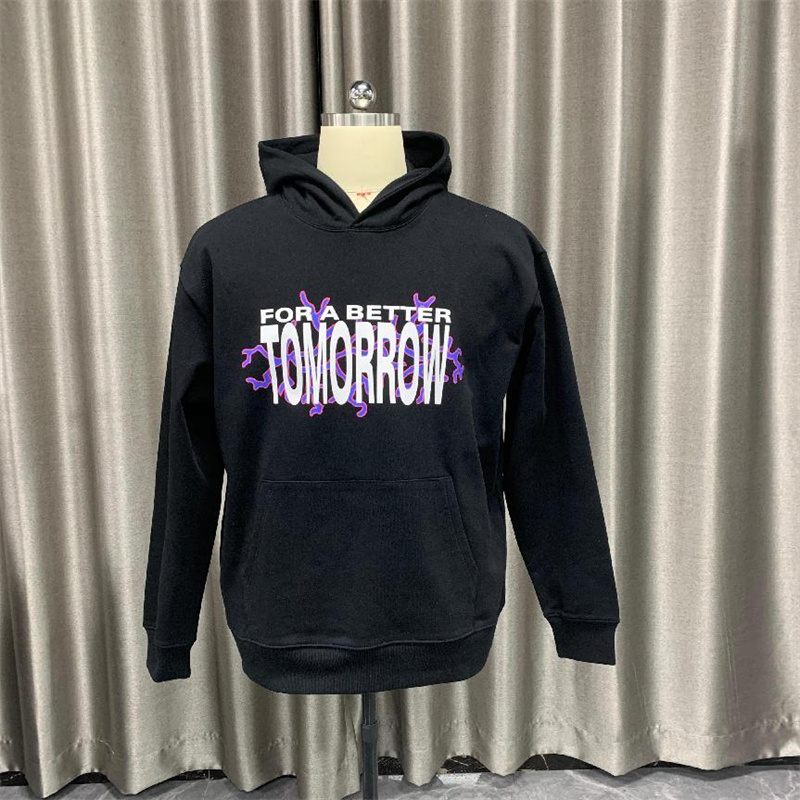In recent years, hoodies, as a representative of casual clothing, have gradually evolved from a single style to a diversified fashion item. Its design not only focuses on comfort, but also incorporates popular elements and the trend of personalized customization.In the fast-paced modern life, hoodies have become an important part of our daily wear. It not only provides us with a comfortable wearing experience, but also an important element in showcasing personal style. Recently, we have learned some new developments about hoodies from the market, especially regarding their cost, delivery time and quality control.
Recently, major brands have launched new hoodies, using high-quality fabrics and paying attention to details to create a comfortable and fashionable appearance. At the same time, some designers have begun to try to combine traditional culture with modern design, making hoodies a new platform for showcasing individuality.

1.Cost and payment terms:
Firstly, let's pay attention to the cost of hoodies and payment terms. In recent years, with the fluctuation of raw material prices and the increasing demand for environmental protection, the cost of hoodies has gradually increased. In order to meet the needs of consumers, many brands have begun to adjust their pricing strategies and offer more flexible payment methods.
2.Delivery time and production capacity
In terms of delivery time, with the advancement of production technology and the rapid development of the logistics industry, the delivery time of hoodies has been greatly shortened. Many brands are able to achieve "T+30" or even shorter delivery times, which means consumers can receive their desired hoodies shortly after placing an order. However, this also puts higher demands on the brand's production planning and supply chain management.
3.Minimum order quantity (MOQ)
When it comes to minimum order quantity, it is actually an important link in the hoodie supply chain. For some small batch custom brands, the minimum order quantity means that consumers can customize unique hoodies according to their own needs. This model not only meets the personalized needs of consumers, but also brings more business opportunities for brands. But at the same time, it also poses challenges to the production scale and cost control of the brand.
In commercial transactions, minimum order quantity is an important concept that refers to the minimum quantity requirement that must be met when purchasing or ordering goods. This regulation is crucial for both suppliers and buyers.In a rigorous business environment, the minimum order quantity is set to ensure fairness and efficiency in transactions. For suppliers, the minimum order quantity can ensure economies of scale in production and reduce additional costs incurred due to producing small quantities of products. For buyers, following the minimum order quantity regulations can avoid additional burdens such as transportation and inventory management caused by ordering too little.
4.Quality control and material expertise
As one of the daily clothing items, the quality control and material selection of hoodies are crucial. From the perspective of materials science, the quality control of hoodies covers multiple aspects, including the selection of raw materials, production processes, quality testing, and other links.
the selection of raw materials is the foundation of quality control for hoodies. High quality hoodies usually use high-quality cotton materials such as long staple cotton, organic cotton, etc., which have high softness, breathability, and moisture absorption. When selecting materials, it is necessary to strictly control the specifications, quality, and color of the materials to ensure that the appearance and performance of the hoodie meet the requirements.the production process also has a significant impact on the quality of hoodies. In addition, quality inspection is also an important part of sweatshirt quality control. Strict quality inspection is required during the production process and before the finished product leaves the factory.

5.Sustainability and ethical practices
Of course, sustainability and ethical practices are also the focus of attention in today's society. In the hoodie industry, more and more brands are paying attention to environmentally friendly materials and sustainable production methods. For example, some brands use environmentally friendly materials such as organic cotton and recycled polyester fibers to reduce their impact on the environment. At the same time, they also ensure ethical compliance in the production process through fair trade, transparent supply chains, and other means.

6.Conclusion
Recently, major brands have launched new hoodies, using high-quality fabrics and paying attention to details to create a comfortable and fashionable appearance. At the same time, some designers have begun to try to combine traditional culture with modern design, making hoodies a new platform for showcasing individuality.
In summary, the production and supply chain management of high-quality hoodies is a complex and important issue. It involves cost control, delivery time guarantee, flexible adjustment of minimum order quantity, strict quality control, and the practice of sustainability and ethical practices. Only in this way can we meet consumer needs while also contributing to the sustainable development of society. In the future, we look forward to seeing more high-quality, environmentally friendly, and ethical sweatshirt products appear in the market, making our lives better.
Post time: Nov-23-2024



